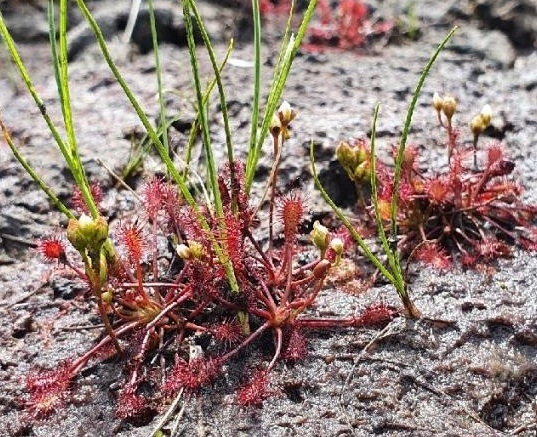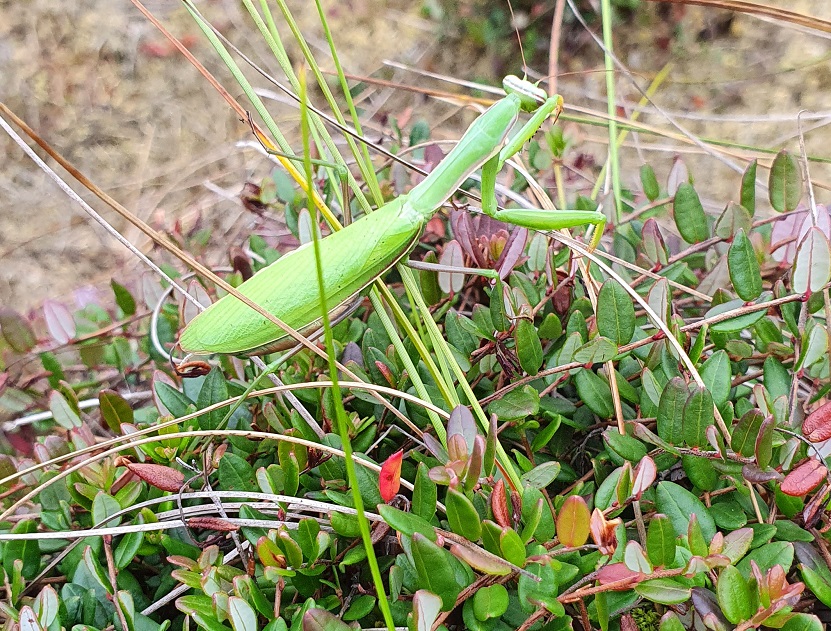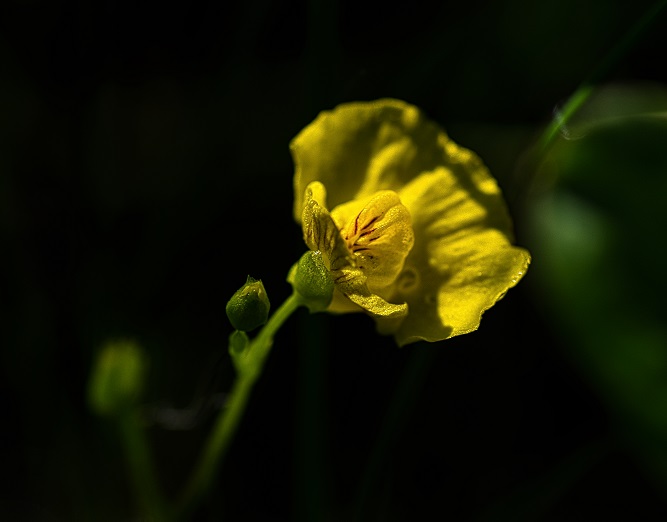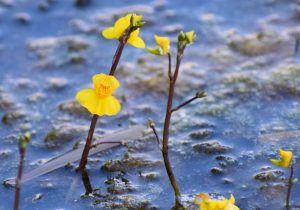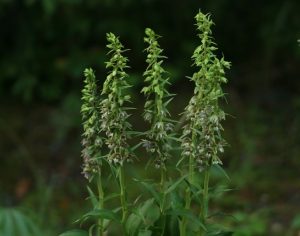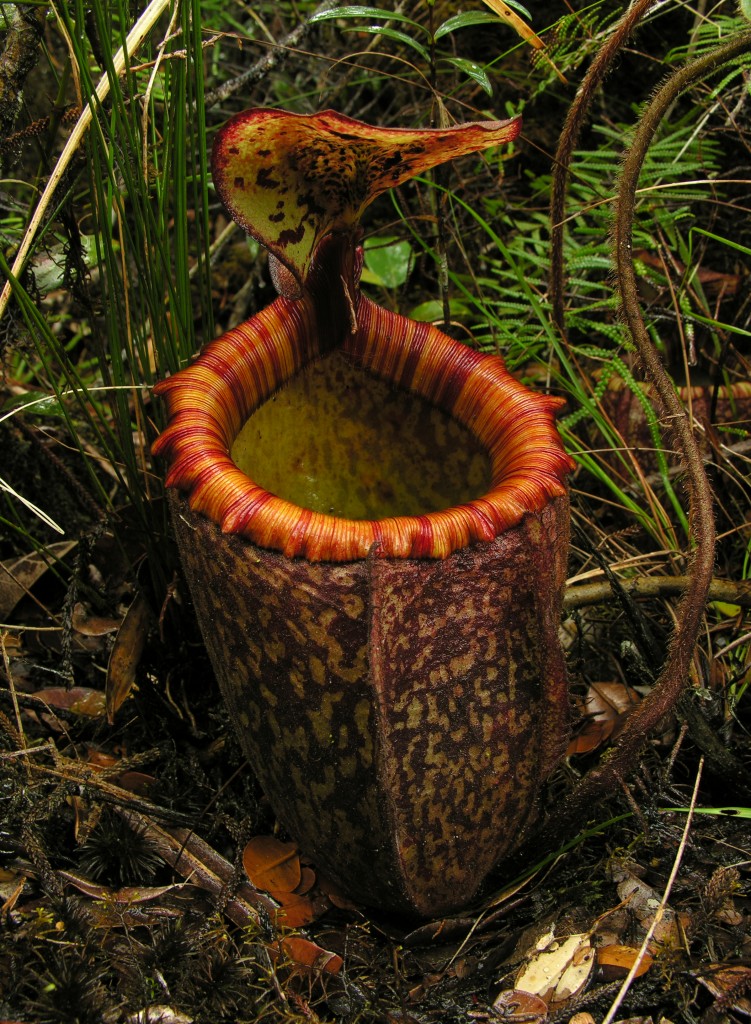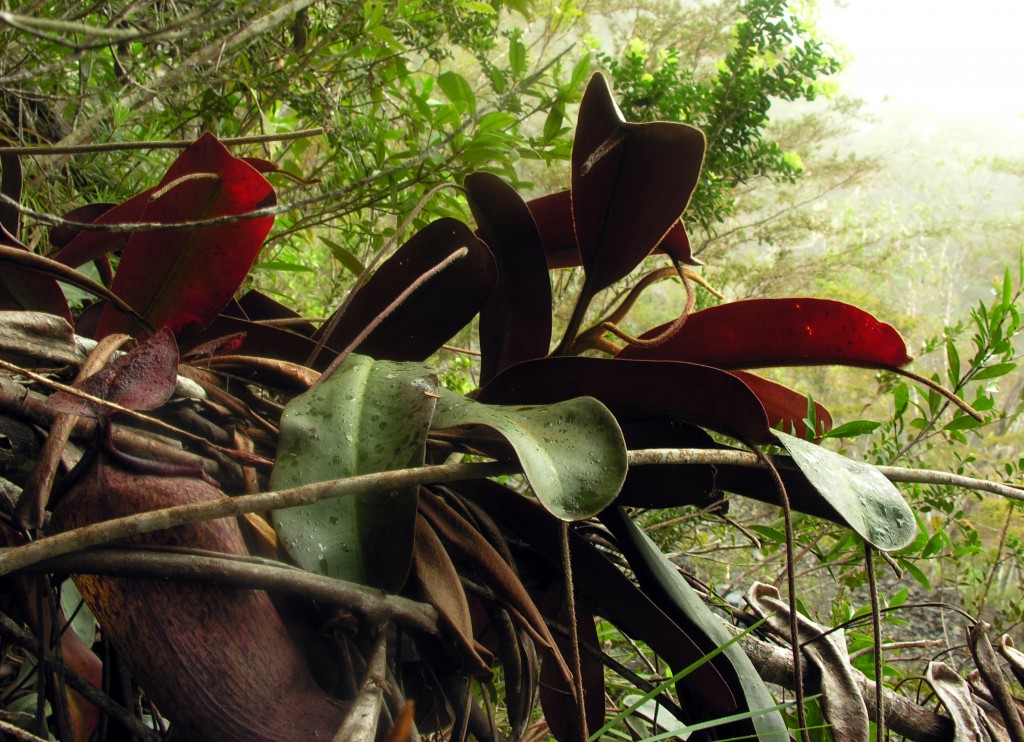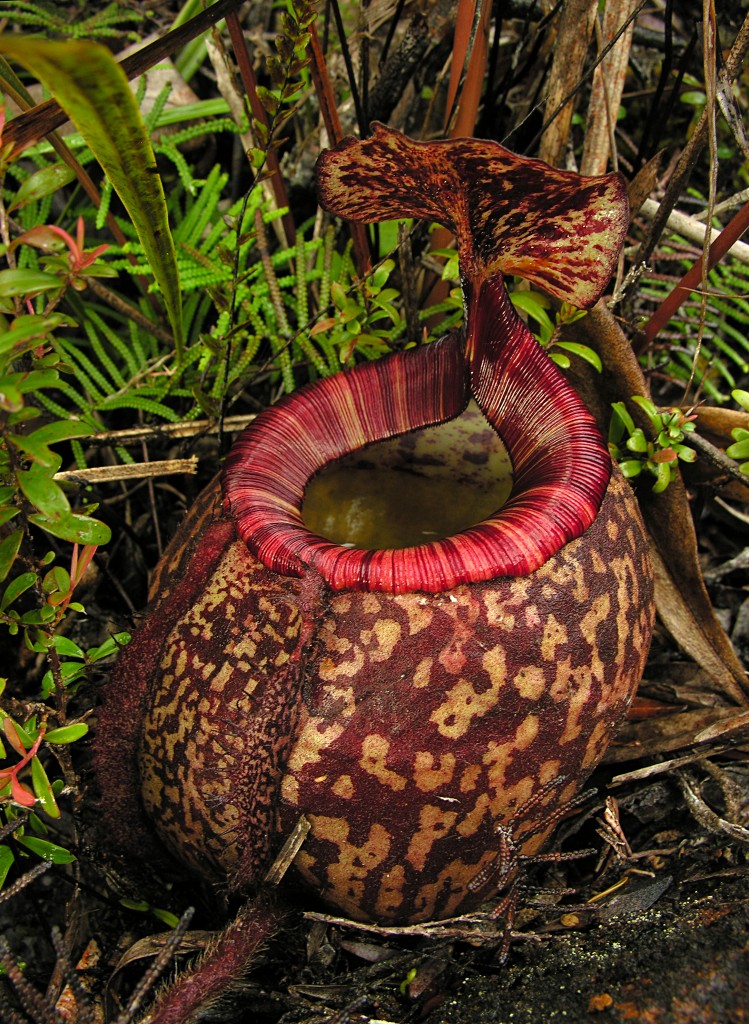In 2008, a remarkable new species of pitcher plant was named from the Philippines. The plant is called Nepenthes peltata, and is named because of its peltate leaf structure. Presently, N. peltata is presently known only from the upper slopes of Mount Hamiguitan in Mindanao, although it may have a wider distribution than is currently appreciated, especially since much of the highlands of southern Mindanao remain little explored due continuing separatist violence and conflict.
On Mount Hamiguitan, N. peltata occurs from approximately 865 m to the summit of the mountain, which stands at 1,635 m. It grows terrestrially in mossy upper montane forest, degraded or recovering secondary vegetation, on bare substrate on exposed cliffsides and landslide areas, and on stunted scrub on ridgetops and the upper slopes of Mount Hamiguitan. N. peltata grows terrestrially and forms a short, rigid, upright stem up to 1 m long which grows above or through surrounding vegetation. It is very distinctive from most other pitcher plants, because the upper surface of its leaves is dark green, and the lower surface is usually (although not always) dark red. All parts of the leaves and pitchers are also lined with long, coarse, brown hairs too.
The lower pitchers are extremely variable is shape and size. They are up to 28 cm long and 16 cm wide, and may be wholly ovate, amphora shaped, ellipsoidal, or urceolate. Wings up to 10 mm wide, fringed with filaments up to 9 mm long run down the front of the lower pitchers. The peristome is loosely cylindrical, up to 2 cm wide and expanded towards the sides and back of the pitcher opening. The peristome is lined with ribs up to 1.5 mm high, spaced up to 2 mm apart. Sometimes the ribs are elongated on the inner edge of the peristome and form inward protruding, spikes up to 1 mm long, although often peristome spikes are lacking. The peristome is slightly raised at the back of the pitcher opening, immediately below lid. The outer margin of the peristome is recurved and often crenellated. The inner edge of the peristome extends into the pitcher opening for several milimeters, particularly below the lid. The lid is elliptic or ovate, up to 8 cm long, 6 cm wide. A well formed appendage is generally lacking, but a pronounced keel (sometimes somewhat triangular in shape) that may extend downards several milimeters (particularly close to the base of the lid) may be present (although is very variable). Many large (up to 3 mm wide), conspicuous nectar glands are distributed across the underside of the lid. The spur is narrow, unbranched, up to 12 mm long and is often hairy.
The colouration of the lower pitchers is exceptionally variable. The exterior may yellow, orange, pink, red or purple, mottled with dark purple or black blotches. The interior of the trap is light yellow or green, often with faint dark red or purple flecks. The peristome may be bright yellow, orange, red, or purple, often striped with variable bands of yellow, orange or red. The lid may be yellow, orange, red or dark reddish purple, often with dark red, purple or black blotches and flecks.
The second pitcher type of this species, (the so called upper pitchers) are not known. All known herbarium specimens of this species lack upper pitchers, and during my observations of this plant in the wild, I did not encounter any. It seems likely that upper pitchers are produced rarely, or hardly at all, perhaps only when climbing stems are produced.
Although N. peltata is closely related to many other species of pitcher plants (notably N. attenboroughii, N. deaniana, N. mantalingajanensis and N. mira), it is easily distinguished from all of these species by its strongly peltate leaves, prominent hairs and leaf colouration.
Eventhough N. peltata is known only from the upper slopes of one mountain, this plant is not currently threatened. The upper slopes of Mount Hamiguitan remain remote, inaccessible and seldom visited, and the populations of N. peltata are extensive and widespread. A local movement led by the municipal Mayor of San Iditro (the honourable Apolinar Ruelo) to permanently protect Mount Hamiguitan as a world heritage site is gaining support and studies of the flora and fauna in support of this proposal are currently being undertaken – see http://www.sanisidro.gov.ph/. If world heritage status is successful obtained, the future of this plant will be permanently secure in the wild.
Stewart McPherson
